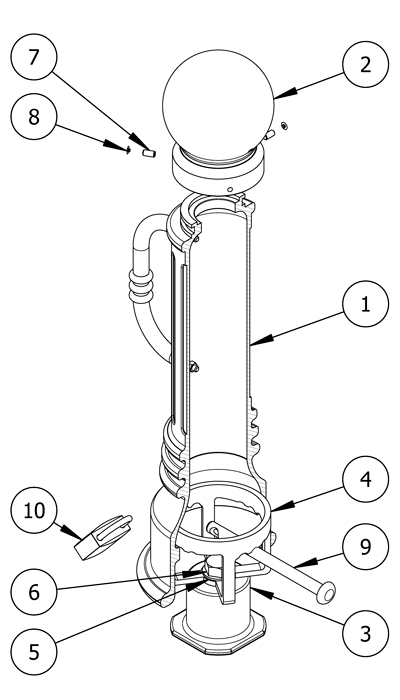Installing Removable Bike Bollards using Anchor Castings in New Concrete
Reliance Foundry’s line of bike bollards can be made removable with removable mounts using anchor castings. Using this mounting system, a bike bollard can be removed by simply unfastening a padlock and removing a pin that runs through the center of the bike bollard’s base.
This installation method allows for bike bollards to offer both access control and reliable bike storage. It is important to note that with this installation method, bike bollards offer limited impact resistance.
PARTS LIST
|
# |
PART |
QTY |
|---|---|---|
|
1 |
Removable Bike Bollard Base |
1 |
|
2 |
Bike Bollard Cap |
1 |
|
3 |
Anchor Casting 1 ” (includes a plug covering top hole) |
1 |
|
4 |
Removable Mount |
1 |
|
5 |
Washer 1″ |
1 |
|
6 |
Hex Bolt 1″ |
1 |
|
7 |
Hexagon Socket Set Screw |
3 |
|
8 |
Plastic Plug |
3 |
|
9 |
Lock Pin |
1 |
|
10 |
Padlock (optional) |
1 |
INSTALLATION EQUIPMENT
|
Auger |
Dirt Tamper |
|
Level |
3/16″ Hex Key |
|
Chalk/Marker |
Measuring Tape |
|
1-1/2″ Wrench |
|
NOTE
- To protect the finish, keep bike bollards in original packaging until the exact moment of installation.
- Handle with care to avoid scratching or damaging bike bollard surfaces as abrasions will lead to rust.
- Once scratched, bike bollards cannot be repaired to original form without re-finishing the entire surface.
Before installation
Study the site plans
Site plans are generally created by the architect of the project.
The architect will mark the intended location of each bike bollard on the plan.
Ensure that the plan coincides with the site and familiarize yourself with the intended arrangement of the bike bollards.
Check for hazards
Always check for hazards such as water pipes, gas lines, and underground wiring before digging.
Prepare the site for concrete
Please consult your local Building Code Department to determine the recommended digging depth below the frost line in your area. Choose this or 12″, whichever is greater. This is your total digging depth.
Note: The diameter of the hole differs based on the bike bollard model. Refer to product drawings to determine specific measurements.
Center the auger on the installation mark and bore a hole to the required depth and diameter.
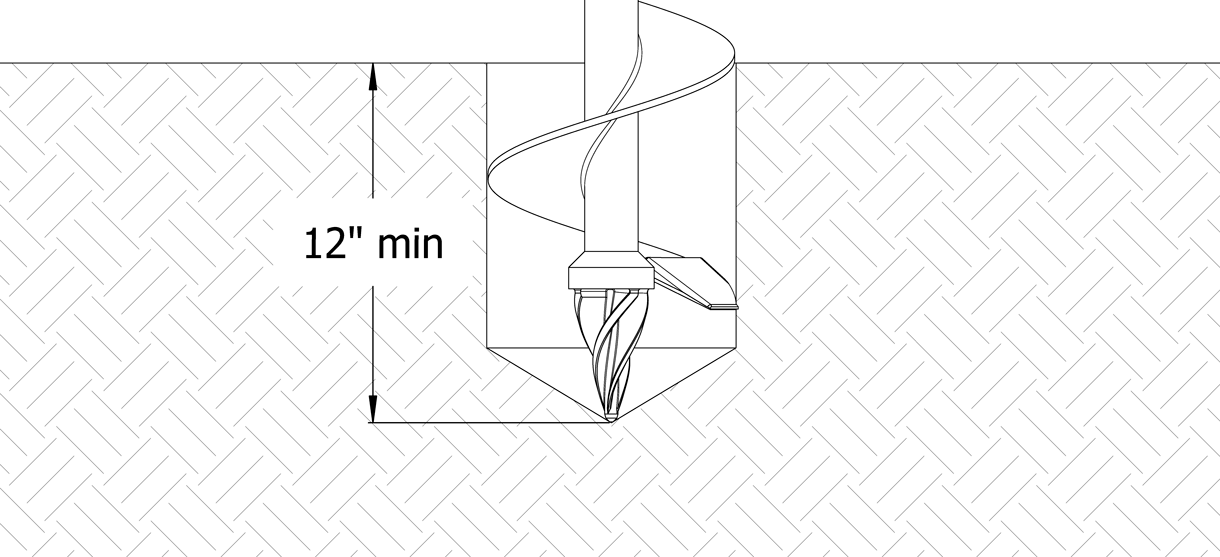
Ensure the area is properly formed to create a perimeter that will hold wet concrete.
Use a dirt tamper(1) to compact the soil below the intended surface.
Prepare the anchor casting for designated location
If the surrounding area is dusty, cover the bottom hole of the anchor casting with duct tape to prevent debris from entering the threaded area. The top hole should already be covered with the plug (A).
Place the anchor casting in designated location and ensure that the top of the casting is flush with the finished surface of the concrete grade (the anchor casting is 4″ high).
The top of the anchor casting must be level.
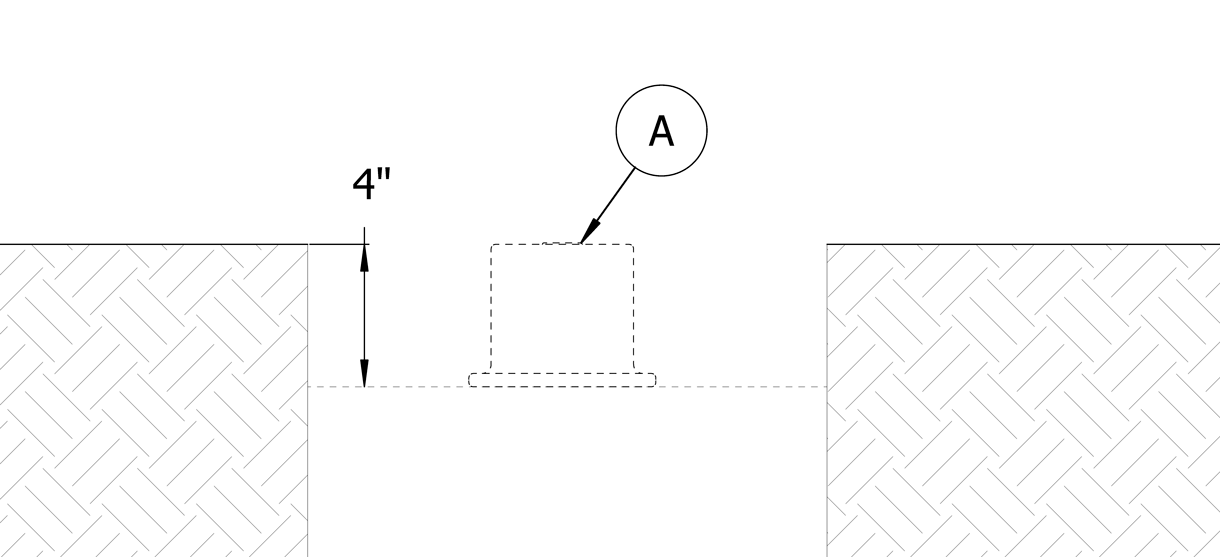
Pour the concrete
Mix and pour the concrete
Ensure that the proper ratio of water and concrete mix is used—the concrete should have a similar texture to moldable clay.
Pour the concrete evenly, ensuring surface is level, and avoid disrupting the anchor casting.
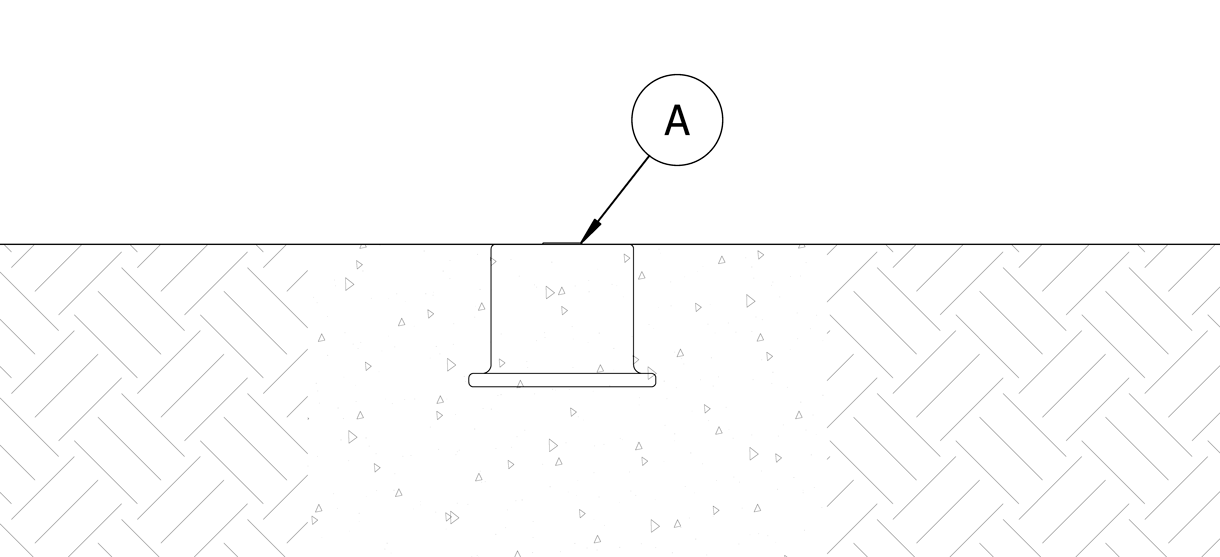
Allow the concrete to cure
A minimum of 2–3 days should be given for concrete to cure before beginning construction projects on new concrete surfaces.
Note: Moisture in the environment and cool temperatures can significantly slow the process
Secure the bollard
Set the removable mount on top of the anchor casting
Remove the plug (A) from the top hole of the anchor casting.
Place the mount on top of the anchor casting so that the center holes line up. Place the washer over top of the center hole. Insert the 1″ bolt and use a wrench to tighten until the mount is secure.
Note: Be sure to check the orientation of the bike bollard arms before securing the bike bollard.
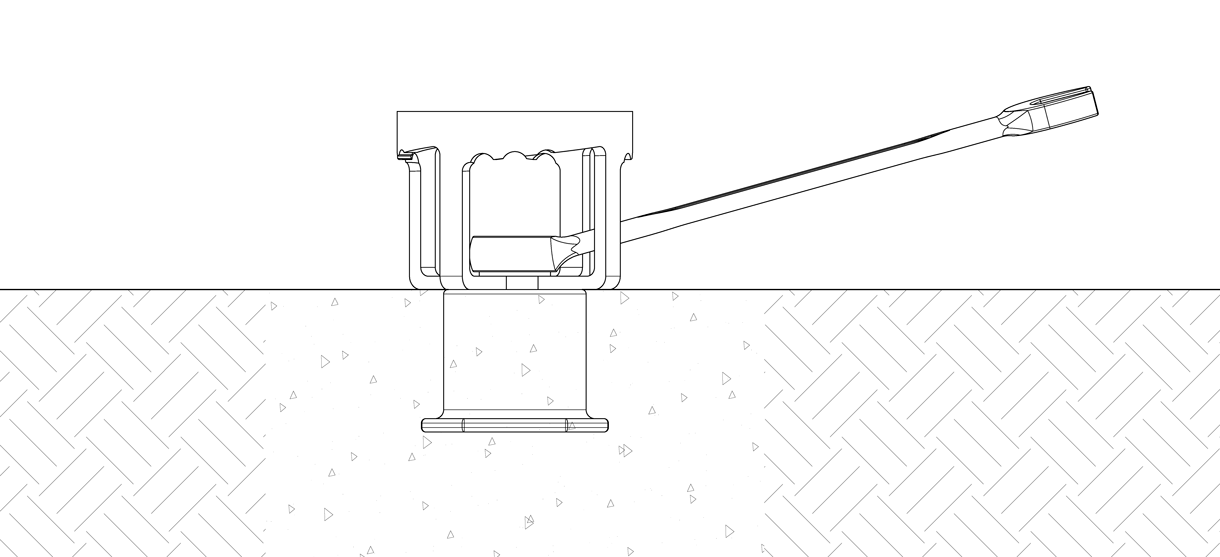
Set the bike bollard over the removable mount
Keep the bike bollard in its protective packaging. When ready to install, remove the bike bollard’s protective packaging.
Set the bike bollard base upright and place over the mount.
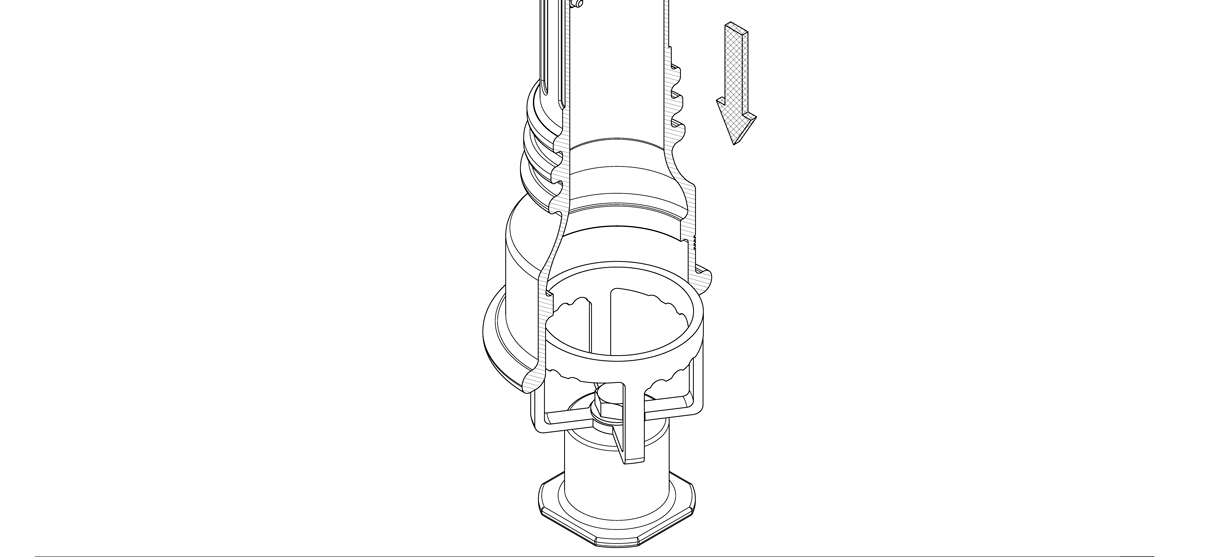
Insert the lock pin
Insert the lock pin through the holes of the bike bollard base. Twist the bike bollard in a clockwise motion to secure into position. Fasten the padlock.
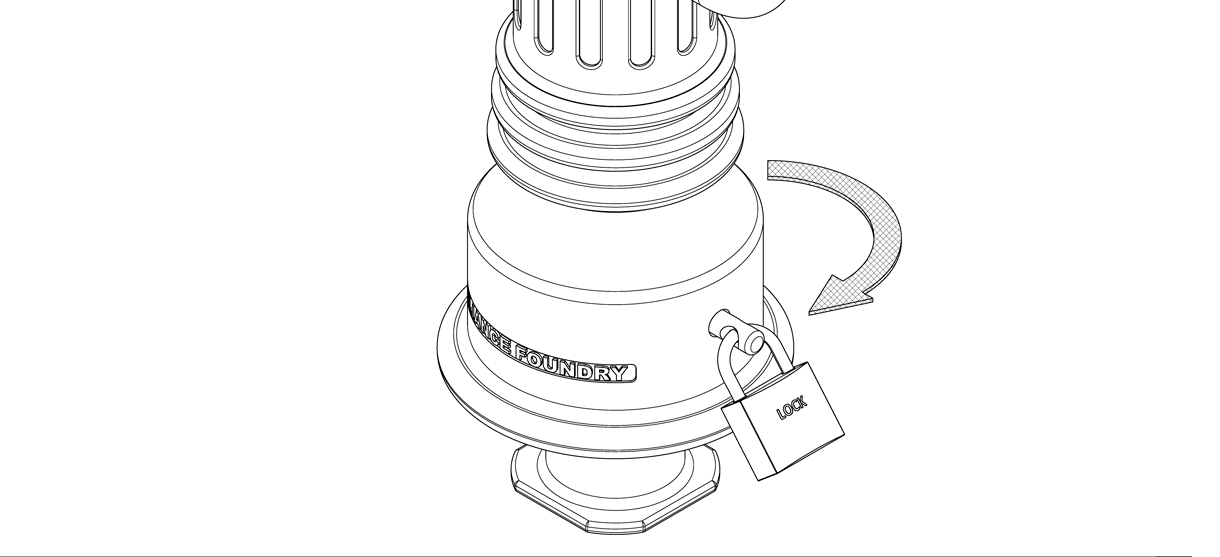
Secure the bike bollard cap
Remove bike bollard cap from its packaging.
Place the cap on the top of the shaft of the bike bollard.
Secure and align the cap to the bike bollard base with the three set screws. Tighten in equal amounts to ensure that the cap remains centered.

Place the plastic plugs (B) over the set screws.
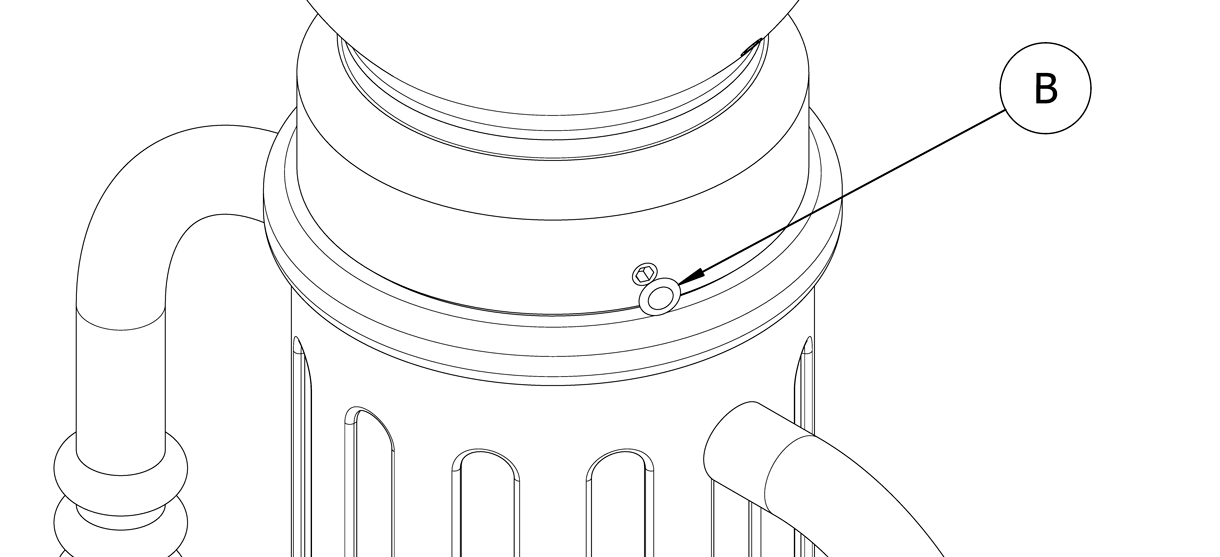
Note: The bike bollard cap can remain intact when replacing or removing bike bollards in the future.
Inspect
Inspect the installation
From a distance, examine the plane of view.
Ensure the bike bollard is plumb to the surface, and the surface is flat.
Check the bike bollard for any signs of surface damage
Abrasions should be covered as soon as possible to prevent rust and ensure the proper life of the bike bollard. For damage repair or other servicing needs, please contact Reliance Foundry’s sales department.
Care and maintenance
Reliance Foundry manufactures its products to the highest design standards to ensure their durability. Reliance Foundry’s bike bollards are finished with long-lasting powder coating. In most North American environments, routine inspections and cleaning will ensure that bike bollards retain their aesthetic appeal. Proper care and maintenance are required to maintain the finish and ensure a full service life.
1. Dirt tamping is not required if working on undisturbed soil.

